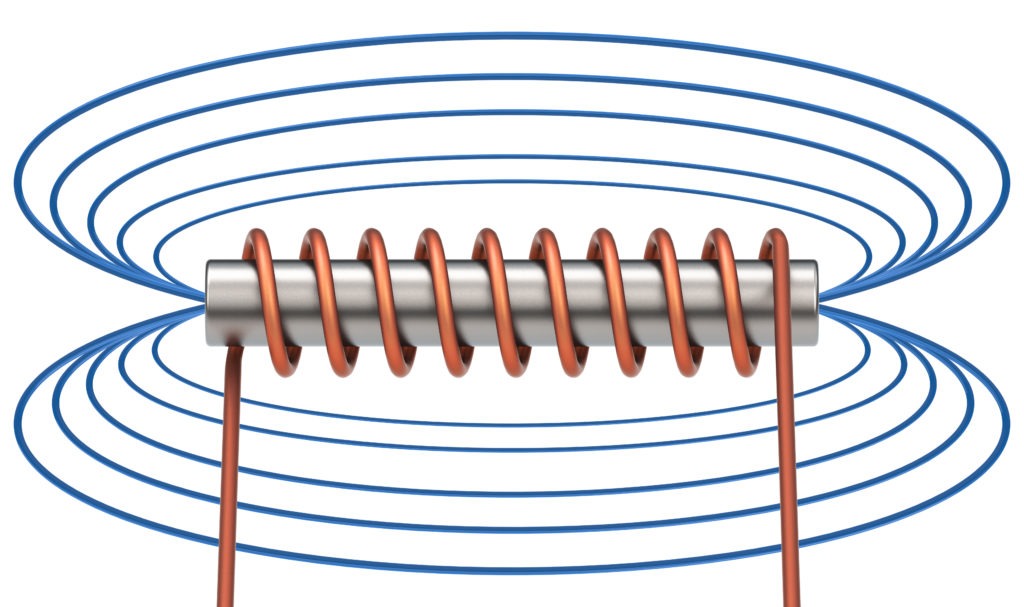
Parental Note: This experiment is geared towards ages 8 and up.
Additional Notes: This experiment will take about 30 minutes to complete.
Experiment Overview:
You may be familiar with magnets – objects that produce an invisible magnetic field that attracts or pulls on some objects while repelling others. Permanent magnets include elements such as iron, steel, nickel, and cobalt. But have you ever heard of an electromagnet? An electromagnet is a magnet that has a magnetic field produced by an electrical current. Electromagnets are made up of a soft metal core and have an electrical current passing through a coil surrounding the core. Unlike permanent magnets, an electromagnet can be turned on and off by connecting and disconnecting the battery source.
In this experiment, you will make your own electromagnet and test out its power!
Experiment Materials:
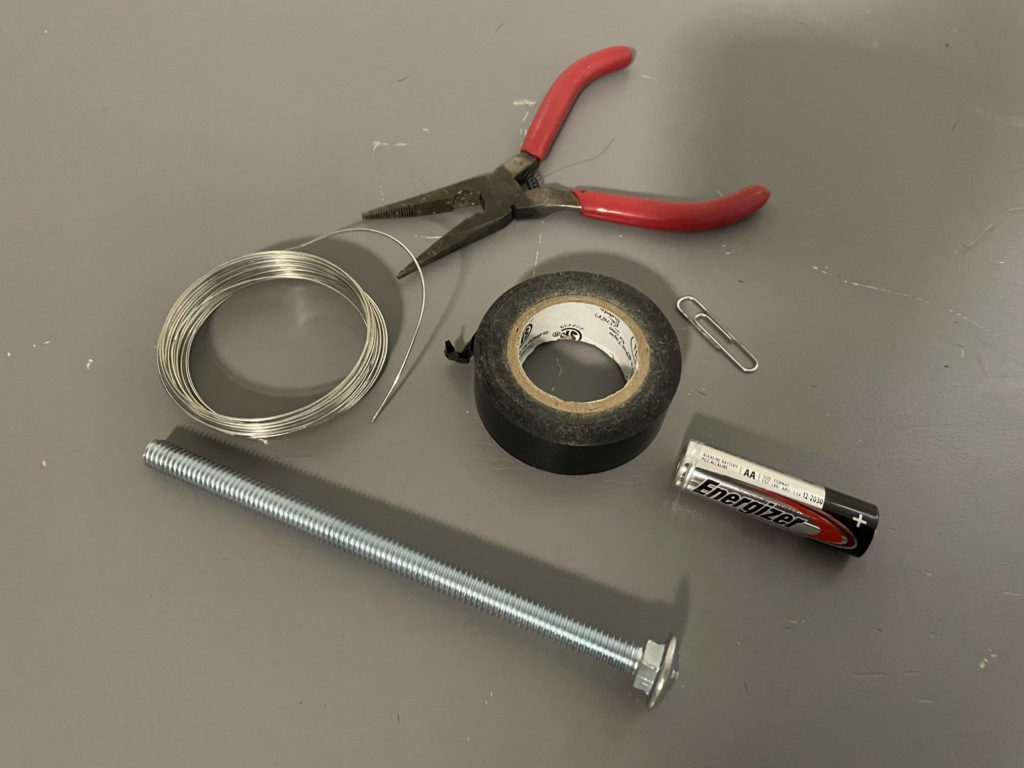
- Long (5-6 inch) iron nail or screw
- Copper wire
- AA Battery
- Wire cutters
- Paper clip
Experiment Process:
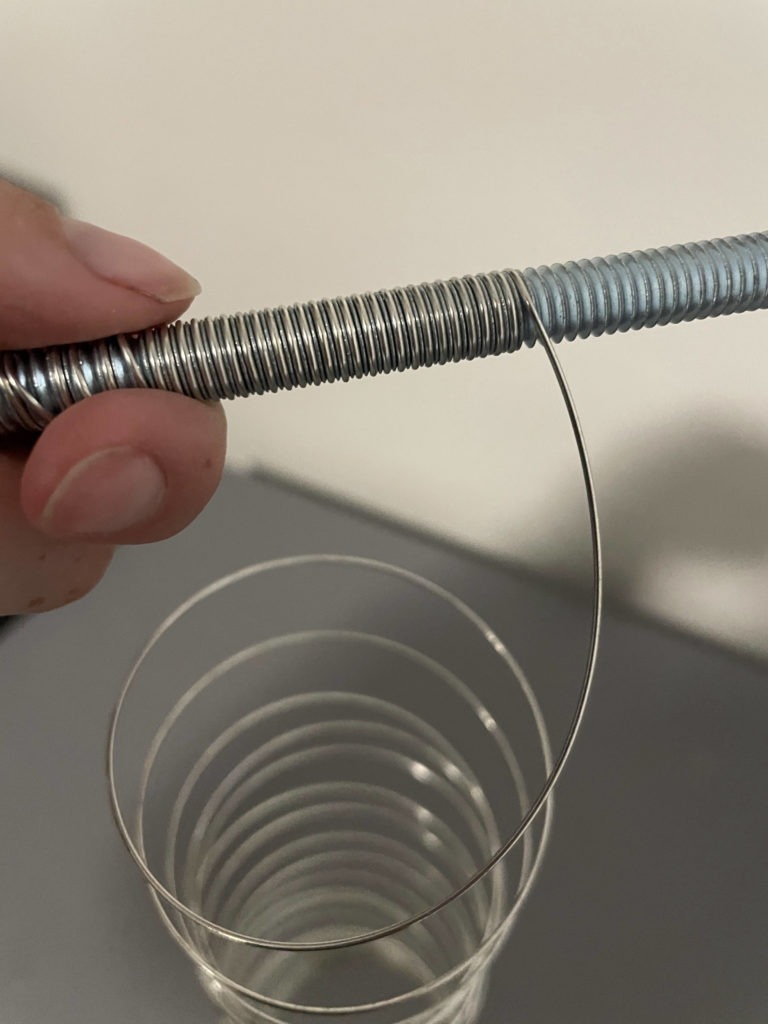
Step 1
Following along with the corkscrew pattern in the screw, wrap the wire in one direction tightly around the screw from end to end.
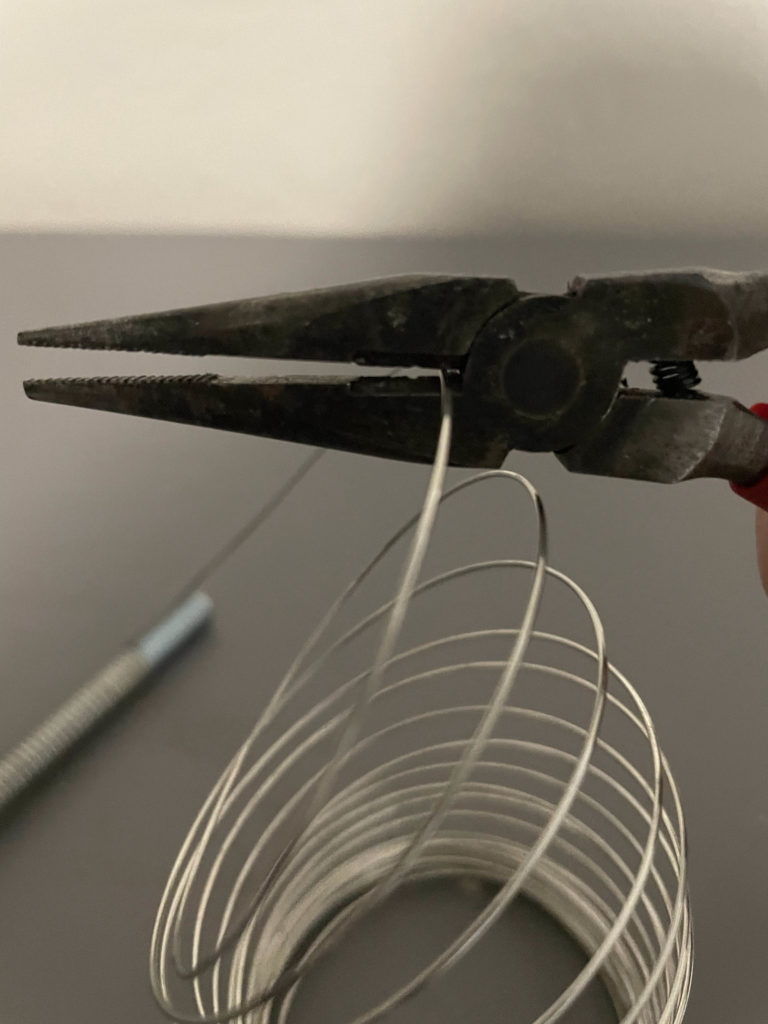
Step 2
Cut the copper wire using wire cutters. Be sure to leave a few inches of copper wire on either side to attach the battery.
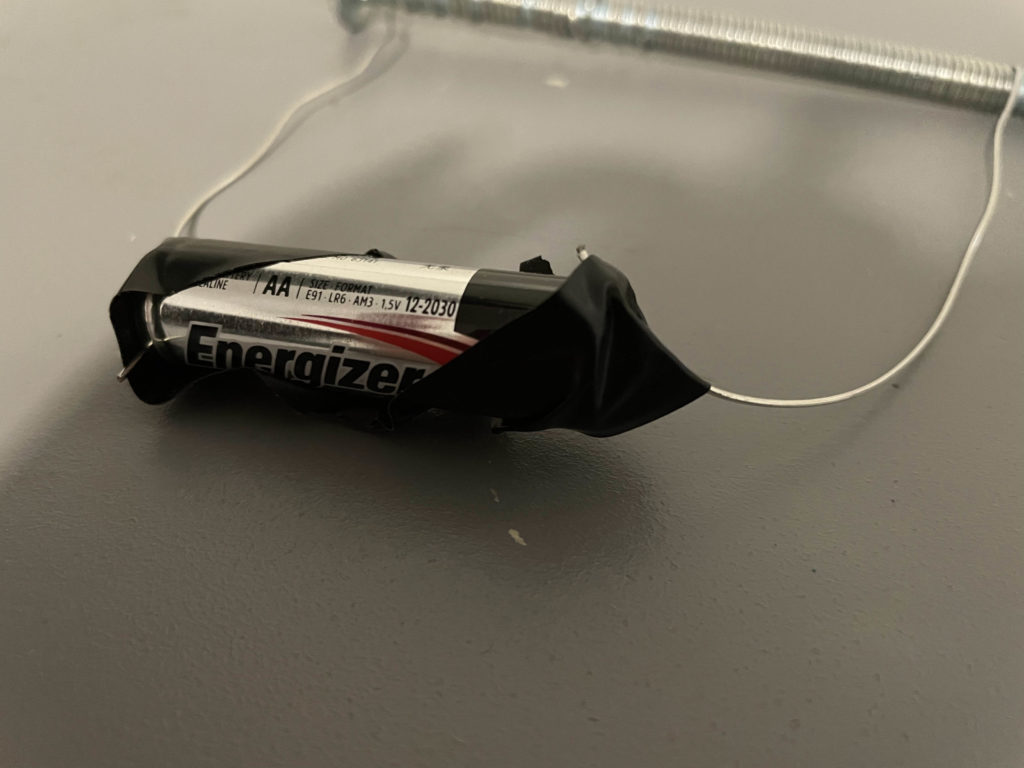
Step 3
Attach the positive end of the battery to one of the copper wires and the negative end to the other wire using electrical tape.
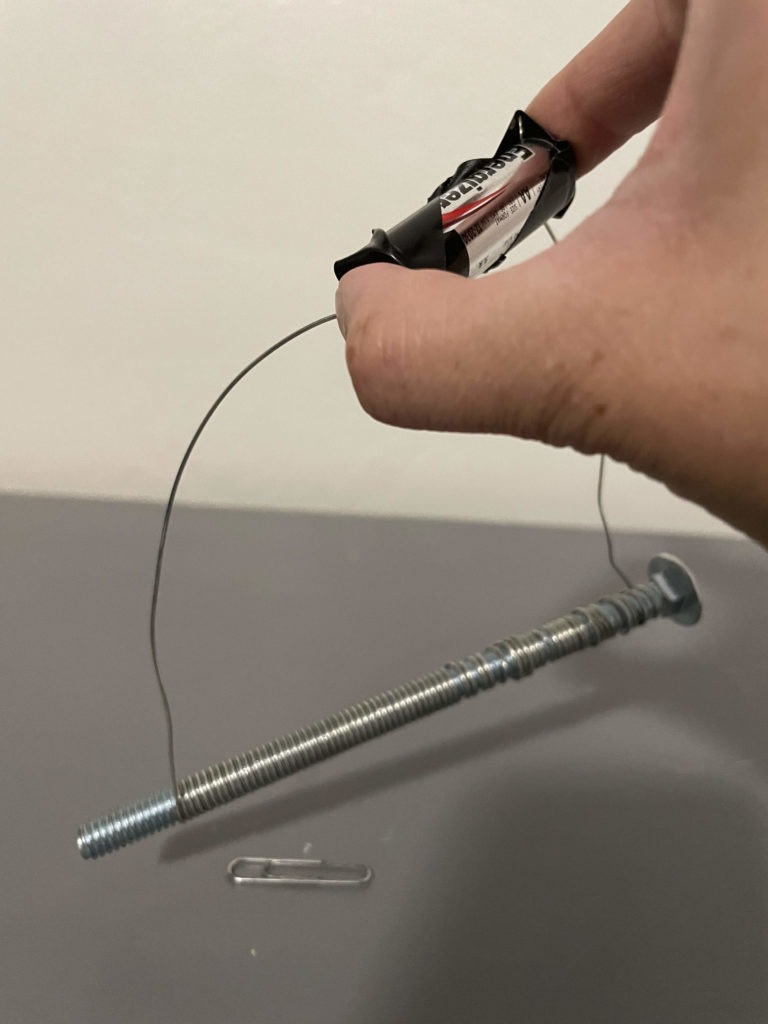
Step 4
Test out your electromagnet. Try to pick up a paperclip using one end of the electromagnet, and then try the other side. Did the paper clip stick to one side?
*Note: If your electromagnet doesn’t work right away, you may need to use some sandpaper to sand down the ends of the copper wire on both sides. Many copper wires are coated in other materials that need to be removed for this experiment to work.
Conclusions:
Your electromagnet is powered by the battery source. If you were to disconnect the battery, the magnet would no longer work. Engineers have found many useful applications for electromagnets, such as in the motors of household appliances such as refrigerators, washing machines, dishwashers, and vacuum cleaners.
Extension:
- See if you can make your magnet stronger by using even more copper wire and using a stronger battery (e.g., D battery). Test the strength of the different electromagnets you create by trying to pick up different magnetic objects.
- Test out the strength of your electromagnet by using a longer core and wrapping your coil more tightly or more loosely. What effect does this have?









